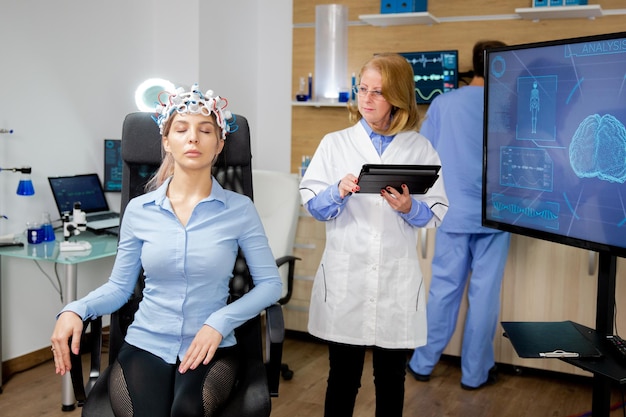Alzheimer’s disease is the most common cause of dementia, affecting millions worldwide. While early-onset Alzheimer’s is often tied to rare inherited mutations, the more prevalent late-onset form involves a complex interplay of aging, genetics, and environmental factors. Among the genes implicated, PICALM (Phosphatidylinositol Binding Clathrin Assembly Protein) has long been recognized as a key player in brain health. Recent research now reveals a surprising and specific mechanism: a PICALM variant associated with increased Alzheimer’s risk alters how immune cells in the brain handle fats—leading to harmful lipid droplet accumulation in microglia.
The PICALM gene encodes a protein involved in clathrin-mediated endocytosis—a cellular process critical for transporting molecules across cell membranes. In neurons, this function supports synaptic vesicle recycling and nutrient uptake, both essential for memory and cognition. Genome-wide association studies (GWAS) have consistently linked certain PICALM variants with altered risk for late-onset Alzheimer’s disease, but until recently, the exact biological mechanism remained unclear.
Now, emerging evidence suggests that the Alzheimer’s-related PICALM variant doesn’t just affect neurons—it has a selective and powerful impact on microglia, the brain’s primary immune cells.
Microglia act as the first line of defense in the central nervous system. They constantly survey the brain environment, clearing cellular debris, dead neurons, and misfolded proteins like amyloid-beta—the hallmark plaque-forming protein in Alzheimer’s. However, when microglia become chronically activated, they can contribute to neuroinflammation, a key driver of neurodegeneration.
New studies show that the PICALM risk allele disrupts normal microglial metabolism, particularly their ability to manage lipids (fats). Instead of efficiently processing fats, microglia carrying this variant begin to accumulate lipid droplets—small, fat-filled storage organelles typically associated with metabolic stress.

Microglia accumulating lipid droplets, a sign of metabolic dysfunction in Alzheimer’s.
Lipid droplets are not inherently harmful. In fact, they play important roles in energy storage and membrane synthesis. But when they build up excessively—especially in non-fat-storing cells like microglia—they signal cellular stress and dysfunction. In the context of Alzheimer’s, lipid-laden microglia appear less effective at clearing amyloid-beta and more prone to releasing inflammatory molecules.
The PICALM risk variant seems to impair the transport of lipids out of microglia or disrupt their breakdown within lysosomes (the cell’s recycling centers). This leads to a backlog of fats, stored as droplets. Over time, this metabolic imbalance pushes microglia into a dysfunctional, pro-inflammatory state—sometimes referred to as ‘disease-associated microglia’ (DAM).
This microglia-specific role of PICALM shifts how we understand genetic risk in Alzheimer’s. It’s not just about neurons failing to communicate or clear plaques—it’s also about the brain’s immune system becoming metabolically compromised. This insight opens new avenues for targeted therapies.
For example, researchers are now exploring whether drugs that enhance lipid metabolism or reduce droplet formation in microglia could slow Alzheimer’s progression. Lifestyle interventions that support healthy lipid balance—such as diet and exercise—may also play a protective role, especially in genetically susceptible individuals.

Microglia (in green) interacting with neurons in a healthy vs. inflamed brain environment.
For decades, Alzheimer’s research has focused heavily on amyloid-beta and tau proteins. While these remain important, the PICALM-lipid droplet connection underscores the growing recognition of neuroinflammation and cellular metabolism as central to the disease process.
Other Alzheimer’s risk genes—such as TREM2 and CD33—also influence microglial function, suggesting a broader pattern: genetic susceptibility often converges on immune cell metabolism in the brain. This paradigm shift could lead to more personalized and effective treatments in the future.
Understanding how a single genetic variant like PICALM can alter microglial lipid handling offers a powerful example of precision medicine in neuroscience. It highlights the importance of cell-type-specific effects—where a gene can have different roles in different brain cells.
Future studies will likely focus on identifying biomarkers for lipid-laden microglia, testing metabolic modulators in preclinical models, and exploring whether imaging techniques can detect these changes in living patients. Ultimately, this knowledge may help identify at-risk individuals earlier and intervene before significant cognitive decline occurs.
The discovery that a PICALM allele increases Alzheimer’s risk by driving lipid droplet accumulation in microglia represents a major step forward in understanding the disease’s complexity. It emphasizes that Alzheimer’s is not just a disorder of neurons, but also of the brain’s immune and metabolic systems.
By targeting the pathways that lead to microglial lipid buildup, scientists may unlock new strategies to delay or even prevent late-onset Alzheimer’s—offering hope to millions around the world.

Health

Health

Health

Health

Health

Health

Health

Health

Health

Health

Health

Wellness

Health

Fitness

Health

Health